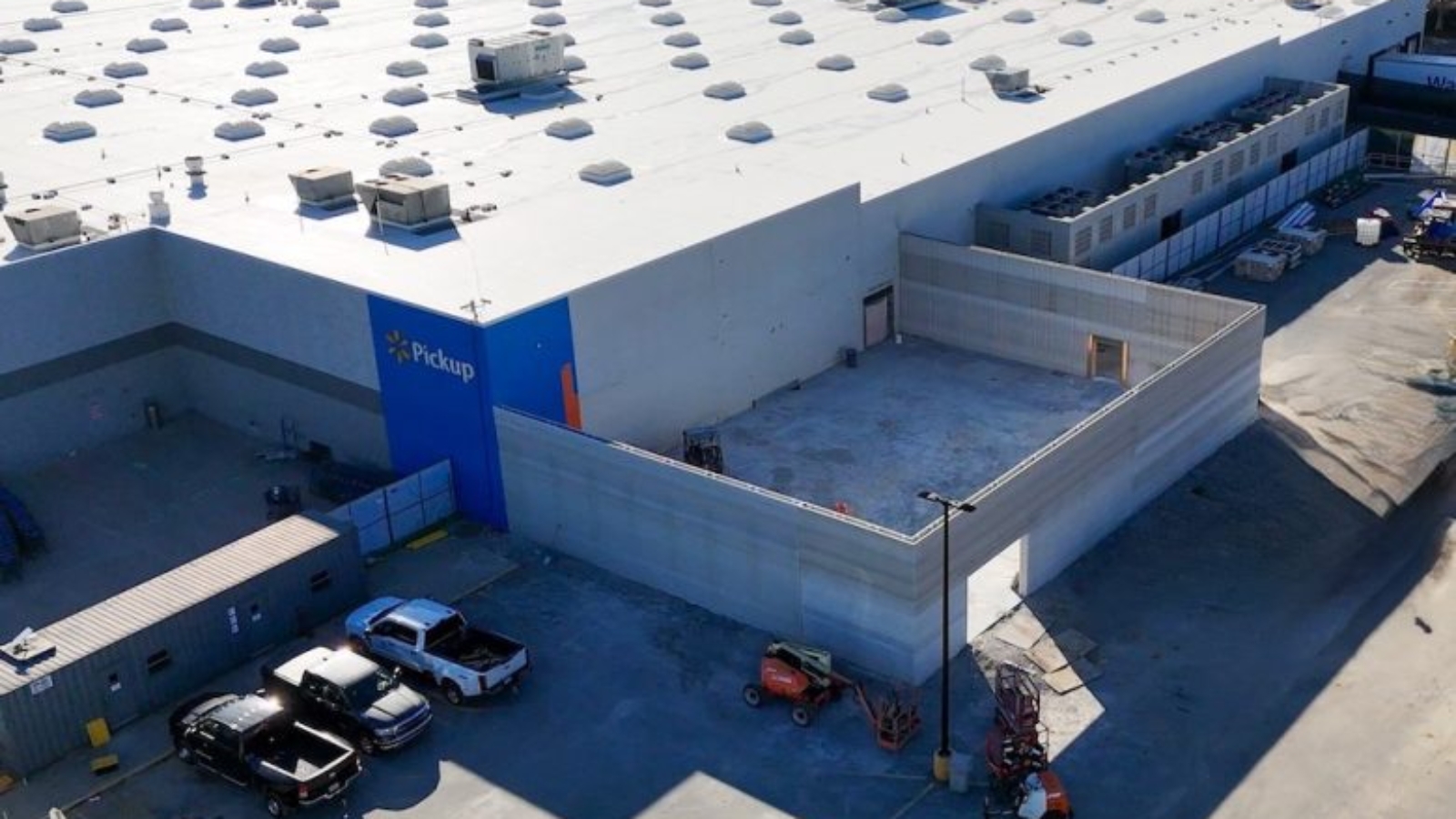Less than a year ago, mega retailer Walmart revealed it had commissioned one of the largest free-standing 3D printed commercial buildings in the United States. This build, completed in Tennessee, consisted of an 8,000-square-foot expansion to an existing site, which now functions as a online pickup center. Today, evidently satisfied with its first major foray into construction 3D printing, Walmart is preparing to open a second 3D printed expansion, this time in Huntsville, Alabama.
The new building, which is slated to open this Friday (May 9) at Walmart Supercenter #5197, spans 5,000 square feet and will be used as an online grocery pick-up and delivery location. Like the first 3D printed structure commissioned by Walmart, this new build was led by Alquist 3D LLC, a Colorado-based construction 3D printing firm, who also brought on FMGI, Inc., a general contractor specializing in commercial real estate.
Impressively, the 3D printed walls of the new expansion were completed within just 75 hours over seven days, marking a dramatic time reduction compared to more conventional cement masonry techniques, which could take over three weeks. On top of that, the building process required far less labor than traditional construction, involving only a five-person team from Alquist and FMGI Huntsville. This team employed two construction 3D printing robots, which built the 16-foot-tall walls layer by layer using a customized concrete mix formulated by Sika USA.

Manufacturing on Demand
“In a commercial construction world that pays so much attention to project timelines and costs, our work with Walmart shows that 3D printing isn’t just a novelty—it’s an innovation ready to scale for retail and other industries,” said Patrick Callahan, CEO of Alquist 3D. “This second project clearly demonstrates how retail expansions can be faster, more cost-effective and less wasteful, paving the way for broader adoption for large-scale commercial builds.”
Another key benefit of using construction 3D printing was that the technology could continue to build in weather conditions that might otherwise have halted conventional construction methods. This actually enabled the team to complete the walls ahead of schedule. As Callahan added: “The adaptability of the technology and materials proves 3DCP as a preferred commercial building solution in varying climates.”
Efficiency was achieved in other ways too, namely in terms of material consumption. According to Alquist 3D, the use of 3D printing enabled the team to reduce material waste by 55% and actually only used 75% of the material supplied by Sika. Moreover, the robotic build site was deemed safer for workers since there was no need for higher risk infrastructure like scaffolding.

Walmart is one of a small but growing number of mainstream brands that is embracing construction 3D printing. Coffee giant Starbucks is also preparing to open its very first 3D printed location in Brownsville, Texas.
You might also like:
Simpliforge Creations produces highest on-site 3D printed structure: The effort was led by Prof. K.V.L. Subramaniam of IIT-Hyderabad, Arun Krishnan, PhD scholar at IIT Hyderabad, and a multidisciplinary team. The structure, printed in just 14 hours using locally sourced materials, demonstrates how indigenous technology can deliver infrastructure rapidly and sustainably.
* This article is reprinted from 3D Printing Media Network. If you are involved in infringement, please contact us to delete it.
Author: Tess Boissonneault


Leave A Comment